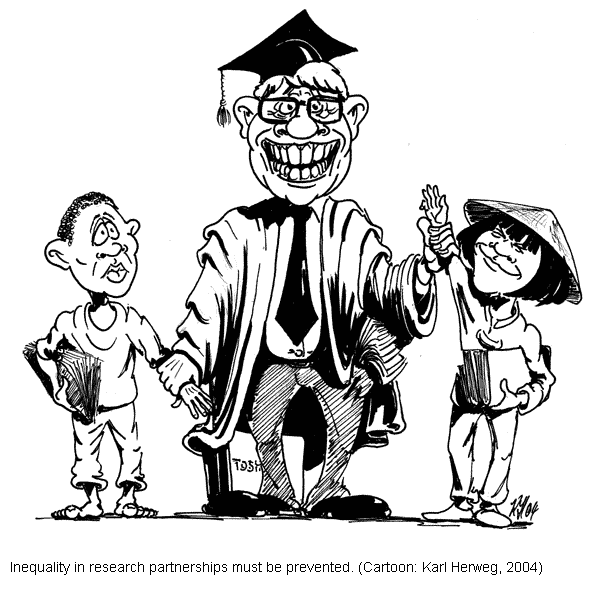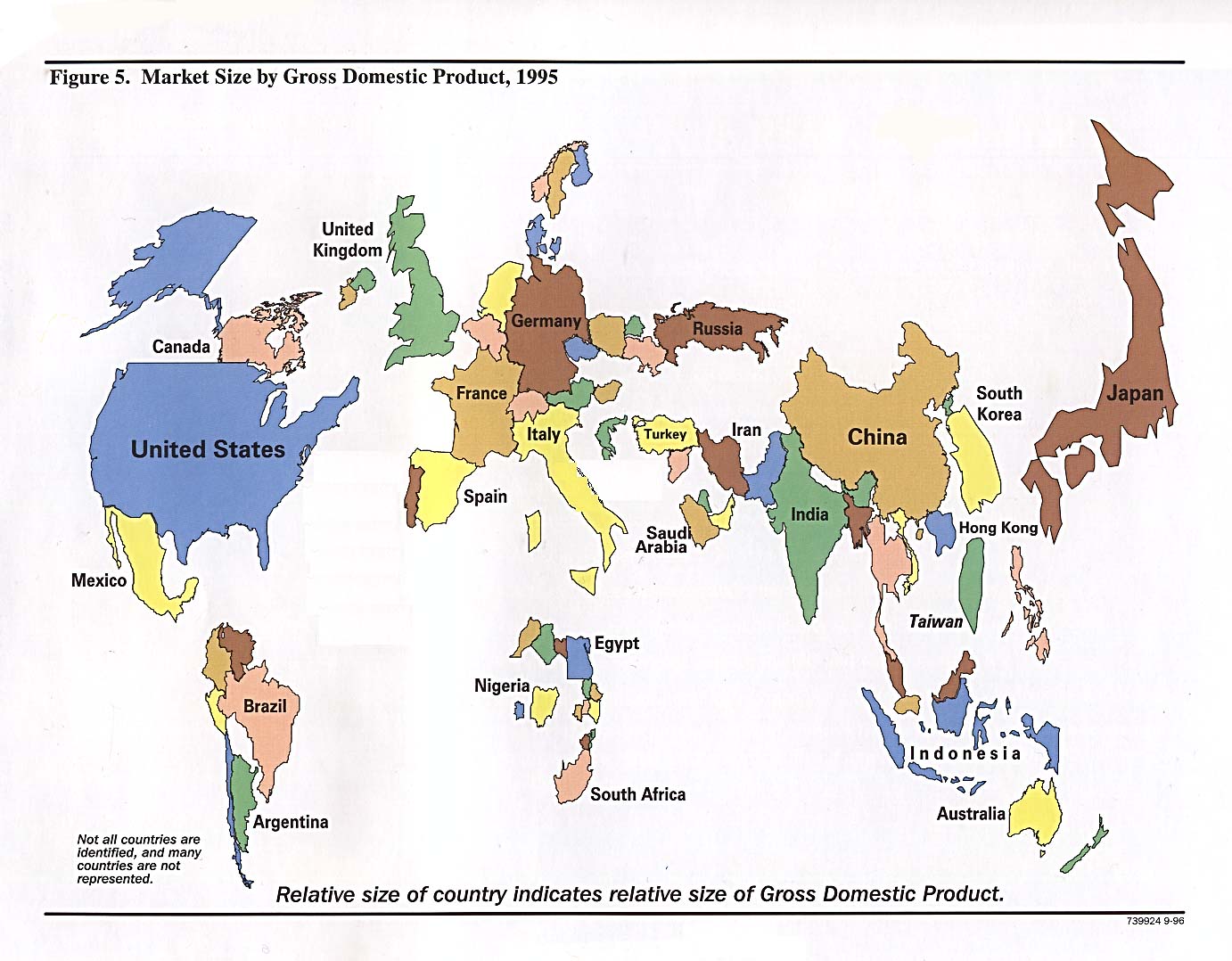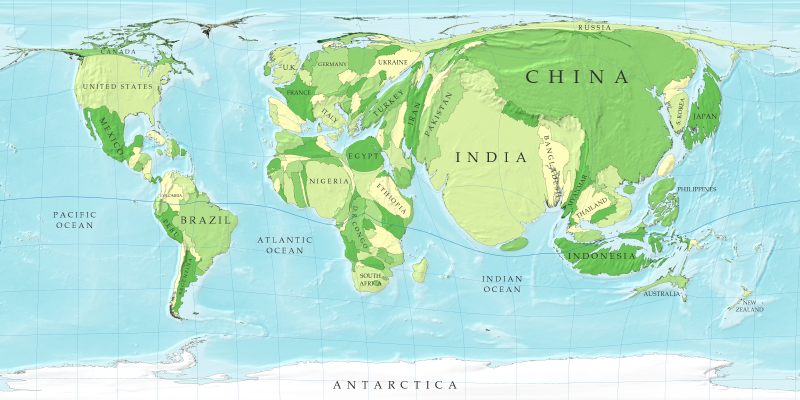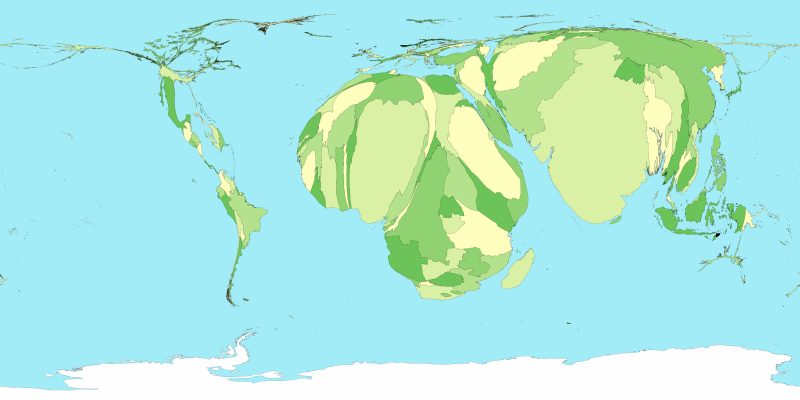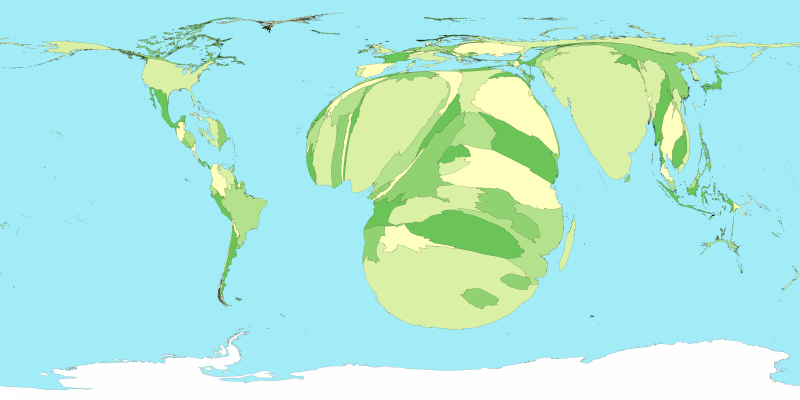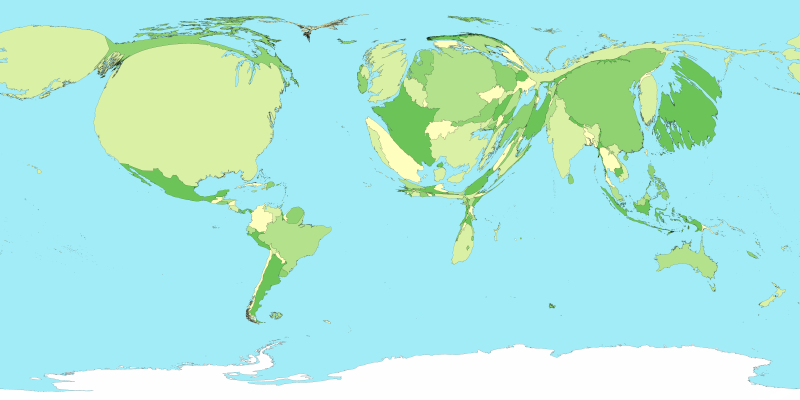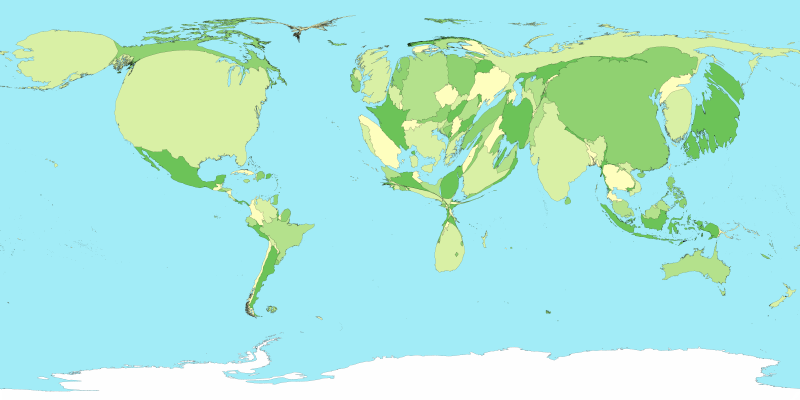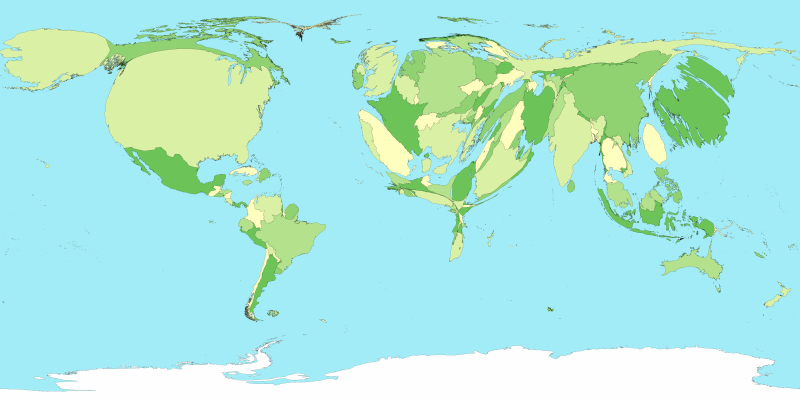Company Type Market Value ($Billions)
1)HSBC Holdings -Banking- 180.81
2)General Electric -Conglomerate- 330.93
3)Bank of America -Banking- 176.53
4)JPMorgan Chase -Banking- 136.88
5)ExxonMobil -Oil & Gas- 465.51
6)Royal Dutch Shell -Oil & Gas- 221.09
7)BP -Oil & Gas- 204.94
8)Toyota Motor -Consumer Durables- 175.08
9)ING Group -Insurance- 75.78
10)Berkshire Hathaway -Diverse Financials- 216.65
Of the top ten 5 are USA, 2 are Netherlands, 2 are UK and 1 is Japan. The Market value is not the only thing, there are also Sales, Profits and Assets. Canada’s first is RBC at 55th highest.
Wednesday, June 17, 2009
Sunday, June 14, 2009
Tuesday, June 9, 2009
Good Websites
Check Your Head - The Youth Global Education Network
http://cyh.dreamhosters.com/?page_id=2
Free Rice
Donate rice to help end hunger
http://freerice.com/
http://cyh.dreamhosters.com/?page_id=2
Free Rice
Donate rice to help end hunger
http://freerice.com/
Lifestyle differences
Monday, June 8, 2009
Decolonization of Algeria
Algeria is a country in Northern Africa and was a French colony between 1830 – 1962. The French used Algeria for their own benefits, often hurting the native populations. The Algerians fought for freedom, but after the French left, the nation was engulfed in Civil war. Before Algeria was colonized by the French, it was a part of the Ottoman Empire. It was know as a Barbary state by the Europeans, where Barbary pirates and slave traders were common.
Algeria is one the longest held French colonies. The natives were mostly Muslims and descendants of the barbers. Colonization of Algeria was long and violent, facing intense resistance. Settlers from France, Malta, and Spain benefited from property that was confiscated from the Muslim natives. The Europeans used modern farming techniques to increase the amount of useable land. Algerians suffered after colonization, literacy rates plummeted and land development caused many to be uprooted from their homes. The Algerians were unhappy and wanted a better government that would help them; they began the fight for independence.
The Algerian War for Independence began in 1954 and lasted until 1962, when France gave up and left. The war was started by the National Liberation Front (FLN) on Red All Saints day (November 1) with terrorist attacks in many parts of Algeria. The FLN call on the Muslims; saying it is the right of the people to restore the Algerian State. The war was composed of guerrilla warfare, torture, and terrorism on both sides. The European immigrants and decedents, also known as Pied Noirs (black feet) were brutally attacked with terrorism and torture. The government called a Ceasefire on March 19, 1962. In the months between the ceasefire and Frances removal terrorism was increased with women and children as the main victims. These brutal terrorist attacks were commonly markets, hospitals, and schools. The Evian Accords were created as a way to end the war. France maintained industrial control (oil reserves) and in return Algeria received financial and technological aid. European descendants got the best end of the deal; they were promised religious freedom and the right to choose either France citizenship or Algerian. The Europeans could also travel back and forth from Algeria to France for work. However, those who were not European did not get to pick their citizenship and had very little political rights. After the ceasefire and Frances removal most of the European population left, and became refugees in other countries.
The first Algerian President was FLN leader was overthrown by his ally, Houari Bourmedienne in 1965. Algeria became socialist and authoritian; the country also became more industrialized and began to nationalize oil extraction. After Bourmedienne Algeria became more corrupted, but education spread. In 1980 the population of Algeria was running out of room, there were housing problems, and the people were protesting the one political party rule. Two movements arose; the Communists, and the Islamic Integrates. The first multi-party elections were held in 1991 with the Islamists winning the first round. The government then intervened and banned all political parties that were based on religion. This inspired extremists to attack the government and led to the Algerian Civil War that lasted until 2002. This war killed many civilians and troops and finally ended when the main guerilla groups surrendered. There are still outbreaks of violence and terrorism from some of these groups, which may be connected to the Al Qaeda.
Algeria is recovering, growing, and developing. The country is becoming independent and is struggling to grow and improve. Algeria still experiences problems such from colonization and war such as; large-scale unemployment, unreliable water and electricity, housing shortages, corruption, and continuing attacks by extremists and the Al Qaeda towards the government. Algeria is still a young nation. It has only been independent for 45 years, and during this time the nation was harassed by constant warfare. Algeria is growing and trying to become a secure nation after decolonization.
-Eden
Sources:
Kimmelman, M. (March 4, 2009). In France, a War of Memories Over Memories of War. Retrieved May 4, 2009. From The New York Times. http://www.nytimes .com/2009/03/03/arts/design/05abroad.html
No Author. (April 23, 2009). Algeria. Retrieved May 6, 2009. From CIA World Fact Book. https://www.cia.gov/library/publications/the-world-factbook/geos/ag.html
No Author. (April 28, 2009). French Algeria. Retrieved May 4, 2009. From Wikipedia, the Free Encyclopedia. Website: http://en.wikipedia.org/wiki/French_Algeria
No Author. (November 27, 2003). Algerian War of Independence. Retrieved May 4, 2009. From Wars of the World. http://www.onwar.com/aced/data/alpha/ algeria1954.htm
Algeria is one the longest held French colonies. The natives were mostly Muslims and descendants of the barbers. Colonization of Algeria was long and violent, facing intense resistance. Settlers from France, Malta, and Spain benefited from property that was confiscated from the Muslim natives. The Europeans used modern farming techniques to increase the amount of useable land. Algerians suffered after colonization, literacy rates plummeted and land development caused many to be uprooted from their homes. The Algerians were unhappy and wanted a better government that would help them; they began the fight for independence.
The Algerian War for Independence began in 1954 and lasted until 1962, when France gave up and left. The war was started by the National Liberation Front (FLN) on Red All Saints day (November 1) with terrorist attacks in many parts of Algeria. The FLN call on the Muslims; saying it is the right of the people to restore the Algerian State. The war was composed of guerrilla warfare, torture, and terrorism on both sides. The European immigrants and decedents, also known as Pied Noirs (black feet) were brutally attacked with terrorism and torture. The government called a Ceasefire on March 19, 1962. In the months between the ceasefire and Frances removal terrorism was increased with women and children as the main victims. These brutal terrorist attacks were commonly markets, hospitals, and schools. The Evian Accords were created as a way to end the war. France maintained industrial control (oil reserves) and in return Algeria received financial and technological aid. European descendants got the best end of the deal; they were promised religious freedom and the right to choose either France citizenship or Algerian. The Europeans could also travel back and forth from Algeria to France for work. However, those who were not European did not get to pick their citizenship and had very little political rights. After the ceasefire and Frances removal most of the European population left, and became refugees in other countries.
The first Algerian President was FLN leader was overthrown by his ally, Houari Bourmedienne in 1965. Algeria became socialist and authoritian; the country also became more industrialized and began to nationalize oil extraction. After Bourmedienne Algeria became more corrupted, but education spread. In 1980 the population of Algeria was running out of room, there were housing problems, and the people were protesting the one political party rule. Two movements arose; the Communists, and the Islamic Integrates. The first multi-party elections were held in 1991 with the Islamists winning the first round. The government then intervened and banned all political parties that were based on religion. This inspired extremists to attack the government and led to the Algerian Civil War that lasted until 2002. This war killed many civilians and troops and finally ended when the main guerilla groups surrendered. There are still outbreaks of violence and terrorism from some of these groups, which may be connected to the Al Qaeda.
Algeria is recovering, growing, and developing. The country is becoming independent and is struggling to grow and improve. Algeria still experiences problems such from colonization and war such as; large-scale unemployment, unreliable water and electricity, housing shortages, corruption, and continuing attacks by extremists and the Al Qaeda towards the government. Algeria is still a young nation. It has only been independent for 45 years, and during this time the nation was harassed by constant warfare. Algeria is growing and trying to become a secure nation after decolonization.
-Eden
Sources:
Kimmelman, M. (March 4, 2009). In France, a War of Memories Over Memories of War. Retrieved May 4, 2009. From The New York Times. http://www.nytimes .com/2009/03/03/arts/design/05abroad.html
No Author. (April 23, 2009). Algeria. Retrieved May 6, 2009. From CIA World Fact Book. https://www.cia.gov/library/publications/the-world-factbook/geos/ag.html
No Author. (April 28, 2009). French Algeria. Retrieved May 4, 2009. From Wikipedia, the Free Encyclopedia. Website: http://en.wikipedia.org/wiki/French_Algeria
No Author. (November 27, 2003). Algerian War of Independence. Retrieved May 4, 2009. From Wars of the World. http://www.onwar.com/aced/data/alpha/ algeria1954.htm
Friday, June 5, 2009
Maps
Imperialism and Decolonization - India
British presence in India began on 31 December 1600, when Queen Elizabeth gave the East India Company monopoly trading privileges to India. The monopoly was on all countries to the east of the Cape of Good Hope and west of the Straits of Magellan. The East India Company traded mostly in cotton, silk, indigo dye, saltpeter, tea, and opium. They struggled in the spice trade, since the Dutch spice trade was already well-established in India. The Company established their first trading post in Surat in 1612, and a second in Madras in 1640, and continued to grow from there. Portuguese, Dutch, French and Danish companies were also moving into the region. The Company had a great deal of control in factory areas already, but their real rule is considered to begin after the Battle of Plassey in 1757. After this, the Company took control of most of the lower Gangetic plain, and continued to expand their control from there.
The British Raj was instituted in 1858, a year after the Indian Rebellion of 1857. Rule of the East India Company was transferred to Queen Victoria, who was declared Empress of India in 1876. Their control extended over India, Pakistan, and Bangladesh, and at various times including Aden Colony, Upper and Lower Burma, British Somaliland, and Singapore. Ceylon (now Sri Lanka) was a British Colony, but not part of British India. On August 14th and 15th, 1947 British India was partitioned and separated into the Dominion of Pakistan (which later became the Islamic Republic of Pakistan and the People's Republic of Bangladesh), and the Union of India (later became the Republic of India). The Indian Independence Act of 1947 resulted in the dissolution of the British India Empire. Up to 12.5 million people were displaced, and several hundred thousand to a million people died.
India was getting along perfectly well on their own before England came along and took over. But during the Raj, India experienced some the worst famines ever recorded, and recent research attributes these famines directly to British policy. In Great Famine of 1876-78, 6.1 to 10.3 million people died, and in the Indian famines of 1899-1900, 1.25 to 10 million people died. Despite famines and illnesses, the population of India from 1800 to 1941 had grown from 185 million to over 380 million. The first Cholera pandemic started in Bengal and by 1820, had spread across India, killing countless Indians and 10,000 British troops. Deaths in 1817-1860 are estimated at 15 million, and 1865-1917 at 23 million. The Third Pandemic of Plague started in China, and spread to all continents, and killed 10 million in India alone.
There was some effort to help people in India. Waldemar Haffkine, who mostly worked in India, developed cholera and bubonic plague vaccines. Sir Ronald Ross proved that malaria is spread by mosquitoes. Mass smallpox vaccines lead to a major decline in smallpox deaths.
Mohandas Gandhi (commonly known as Mahatma Gandhi) was the political and spiritual leader of India, and lead the country in the Indian independence movement. He pioneered the idea of resisting tyranny though civil disobedience instead of violence. In India, Gandhi is officially honored as the Father of the Nation. His birthday, October 2nd, is commemorated in India as the national holiday Gandhi Jayanti, and around the world as the International Day of Non-Violence.
Like most countries who underwent decolonization, India was left in a very bad situation by Britain. They have a huge population, high infant death rates, and little money, but are improving things very quickly. They haven't been an independent country for very long, and they are making lots of headway into fixing things. While a great deal of countries who underwent decolonization are third world, India is currently sitting around second and is still coming up.
~Rebecca
The British Raj was instituted in 1858, a year after the Indian Rebellion of 1857. Rule of the East India Company was transferred to Queen Victoria, who was declared Empress of India in 1876. Their control extended over India, Pakistan, and Bangladesh, and at various times including Aden Colony, Upper and Lower Burma, British Somaliland, and Singapore. Ceylon (now Sri Lanka) was a British Colony, but not part of British India. On August 14th and 15th, 1947 British India was partitioned and separated into the Dominion of Pakistan (which later became the Islamic Republic of Pakistan and the People's Republic of Bangladesh), and the Union of India (later became the Republic of India). The Indian Independence Act of 1947 resulted in the dissolution of the British India Empire. Up to 12.5 million people were displaced, and several hundred thousand to a million people died.
India was getting along perfectly well on their own before England came along and took over. But during the Raj, India experienced some the worst famines ever recorded, and recent research attributes these famines directly to British policy. In Great Famine of 1876-78, 6.1 to 10.3 million people died, and in the Indian famines of 1899-1900, 1.25 to 10 million people died. Despite famines and illnesses, the population of India from 1800 to 1941 had grown from 185 million to over 380 million. The first Cholera pandemic started in Bengal and by 1820, had spread across India, killing countless Indians and 10,000 British troops. Deaths in 1817-1860 are estimated at 15 million, and 1865-1917 at 23 million. The Third Pandemic of Plague started in China, and spread to all continents, and killed 10 million in India alone.
There was some effort to help people in India. Waldemar Haffkine, who mostly worked in India, developed cholera and bubonic plague vaccines. Sir Ronald Ross proved that malaria is spread by mosquitoes. Mass smallpox vaccines lead to a major decline in smallpox deaths.
Mohandas Gandhi (commonly known as Mahatma Gandhi) was the political and spiritual leader of India, and lead the country in the Indian independence movement. He pioneered the idea of resisting tyranny though civil disobedience instead of violence. In India, Gandhi is officially honored as the Father of the Nation. His birthday, October 2nd, is commemorated in India as the national holiday Gandhi Jayanti, and around the world as the International Day of Non-Violence.
Like most countries who underwent decolonization, India was left in a very bad situation by Britain. They have a huge population, high infant death rates, and little money, but are improving things very quickly. They haven't been an independent country for very long, and they are making lots of headway into fixing things. While a great deal of countries who underwent decolonization are third world, India is currently sitting around second and is still coming up.
~Rebecca
Friday, May 29, 2009
Monday, May 25, 2009
Richest/Poorest Nations
Here is a top ten list of nations based on there annual income (GDP), and a top ten list of the poorest countries.
RICHEST
1-USA $14.3 Trillon
2-Japan $4.9 Trillion
3-China $4.4 Trillion
4-Germany $3.7 Trillion
5-France $2.9 Trillion
6-United Kingdom $2.7 Trillion
7-Italy $2.3 Trillion
8-Russia $1.7 Trillion
9-Spain $1.6 Trillion
10-Brazil $1.57 Trillion
11- CANADA $1.5 Trillion
POOREST
1-Kiribati $137 Million
2-Sao Tome & Principe $176 Million
3-Tonga $258 Million
4-Dominica $364 Million
5-Guinea-Bissau $461 Million
6-Solomon Islands $473 Million
7-East Timor $499 Million
8-Comoros $532 Million
9-Samao $537 Million
10-Vanuatu $573 Million
9 of thr 10 poorest nations are located on islands in Africa and the Pacific ocean
RICHEST
1-USA $14.3 Trillon
2-Japan $4.9 Trillion
3-China $4.4 Trillion
4-Germany $3.7 Trillion
5-France $2.9 Trillion
6-United Kingdom $2.7 Trillion
7-Italy $2.3 Trillion
8-Russia $1.7 Trillion
9-Spain $1.6 Trillion
10-Brazil $1.57 Trillion
11- CANADA $1.5 Trillion
POOREST
1-Kiribati $137 Million
2-Sao Tome & Principe $176 Million
3-Tonga $258 Million
4-Dominica $364 Million
5-Guinea-Bissau $461 Million
6-Solomon Islands $473 Million
7-East Timor $499 Million
8-Comoros $532 Million
9-Samao $537 Million
10-Vanuatu $573 Million
9 of thr 10 poorest nations are located on islands in Africa and the Pacific ocean
Monday, May 18, 2009
Uganda after British Involvement
Uganda first came to the attention of the world in the 1830’s. Arab traders had moved inland from the Indian Sea and ‘discovered’ the African nation. Uganda was already colonized in many places however, with many kingdoms and well developed politics. In the 1860’s British followed suit and arrived in Uganda searching for the source of the Nile. Once explorers arrived it wasn’t long after that religious missionaries appeared on the scene. In 1894 the British took formal control over the country bordering Rwanda, Kenya, Sudan, Congo and Tanzania. The British ruled until 1962, cash cropping the land, especially for cotton. The British pulled out of Uganda because of harsh economic times and left the country with out a strong government. In March 1962 Uganda elected Benedicto Kiwanuka as the country’s first Prime Minister. This was only because Catholic Ugandan’s were the only ones to vote. One month later the Protestants also joined in on the choosing of a government, and Milton Obote defeated Kiwanuka. He led the nation to independence in October 1962. In 1966 he named himself President obtaining full power over Uganda. It was a relatively quiet time in Uganda during his reign. He ruled until Idi Amin seized power in 1971. Amin worked his way up in the army since 1946 and gained position of Commander of the Ugandan Army. On January 25, 1971 Obote was at a meeting in Singapore, and Amin took his chance. He surrounded Obote’s office and accused the leader of corruption. He also stated that he would just be caretaker of the nation while new elections were being set. He also said he would bring the nation back to its democratic ways as soon as possible, and free many political prisoners. Both Ugandan citizens and international crowds were welcoming to Amin. One week after seizing power he declared himself President and head of Uganda’s military. He appointed many soldiers to top government positions, and created a new intelligence agency, which would be the site of much torture in the coming years. Amin, from the beginning, tried to rid his problems in one way: killing. Many times he would you could see numerous bodies floating down the Nile. He killed opposition, religious groups, ethnic groups, bureaucrats, judges, lawyers, students and more. Amin also kicked out all 80,000 Asians living in Uganda. Most of who were of Indian descent. 20,000 of them were Ugandan citizens. Only professionals such as doctors and teachers were allowed to stay. Many owned businesses, which were run to the ground when handed over to supporters. Thus just adding to the woeful economic times. Because of Amin’s actions many nations severed ties with Dictator. In 1976 a French airplane was hijacked and allowed to land in Uganda, thanks to the Palestinian nationality of the hijackers. All non-Jews and Israelis were allowed to leave. In total 83 Jewish and Israeli people and 20 others who would not leave. The hostages were eventually rescued by Israel. Amin was humiliated and the UN accused Uganda of breaking sovereign law. Soon after Idi massacred many Kenyans living in Uganda. Many believe it to be because of their aid in the raid. Amin’s reign was just about over, Ugandans everywhere were fleeing and he was getting into more serious problems with nations, declaring wars. Tanzania and Uganda exiles ran Amin out of the country in 1979, before leaving he left a death toll of around 300,000. Milton Obote returned and became President for a second term in 1980. His second term was during the Uganda Bush War, which began because of the allegations of a fixed election. The war waged from 1981- 1986. At the end of it the man who came out was Yoweri Museveni. He has been head of Uganda since 1986 and brought stability and economic growth the East African Nation. A New York Times article called Museveni “…Africa's ‘other statesman,’ second only to the venerated South African President, Nelson Mandela.” Uganda has not been perfect, but when you look at all that has happened to bordering nations and Africa as a whole Uganda has come out of decolonisation on top. It had to go through the rule of one of the world’s most notorious leaders but it still got through it. The future looks brighter for Uganda then many and most third world nations.
Thursday, April 30, 2009
Subscribe to:
Posts (Atom)














